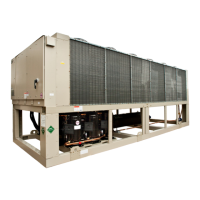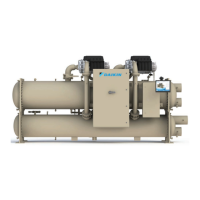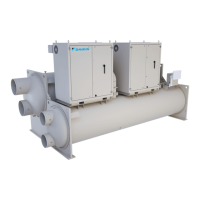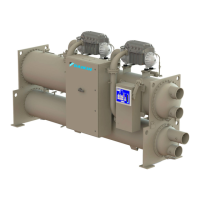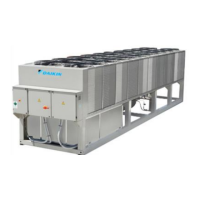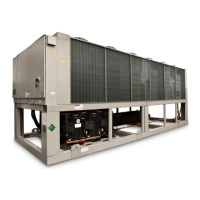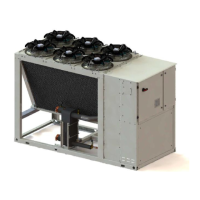28 ED 15121
Alarms
Alarm Classes
Modbus alarms in a MicroTech III Chiller Unit Controller are divided into three classes: Faults, Problems, and
Warnings. Fault alarms have the highest severity level. Problem alarms have medium severity level. Warning alarms
have the lowest severity level.
Fault Alarms
Fault alarms require an acknowledgment from the operator. These alarms indicate that the compressor or chiller is shut
down.
Problem Alarms
Problem alarms do not cause compressor shutdown but limit operation of the chiller in some way.
Warning Alarms
A warning is enunciated whenever an abnormal condition exists which does not affect chiller operation.
Alarm Handling
MicroTech III Chiller Unit Controllers can have alarms monitored by one of three methods: 1) individually by BACnet
Binary Values, 2) using Alarm Digital Output, or 3) Alarm class.
1. To monitor alarms individually, read the value from the holding register for each alarm. Each alarm has its own
holding register. If the value of the holding register is zero (0), the alarm is not active. If the holding register is one
(1), the alarm is active.
2. To determine whether any alarm is active or not, read the Alarm Digital Output register, 40017. If the value of the
holding register is zero (0), no alarms are active. If the holding register is one (1), there is at least one active alarm.
3. To monitor alarms by alarm class, read the holding register for the appropriate class (Warnings, Problems and
Faults). Each class has two holding registers. One register reports the highest active Alarm Code and one reports
the highest active Alarm Index. The alarm codes and alarm indexes are not ordered by priority. See Table 3 for
more information. The Alarm Code is calculated in the following manner:
Alarm Digital Output
Keypad Menu Path No Keypad Equivalent
This read only output data point indicates whether an alarm condition has occurred. This variable must be polled for
alarm notification.
Data Type Holding Register Measurement Units Valid Range
RO Holding Register 17 NA N/A
0=No Alarm
1=Alarm
XX
X
X X
Circuit Number
1
2
3
4
5
6
0: No Preference
Compressor Number (1,2,4,6,5,6), 0: No Preference
Alarm Level (1:Warning, 2:Problem, 3:Fault)
